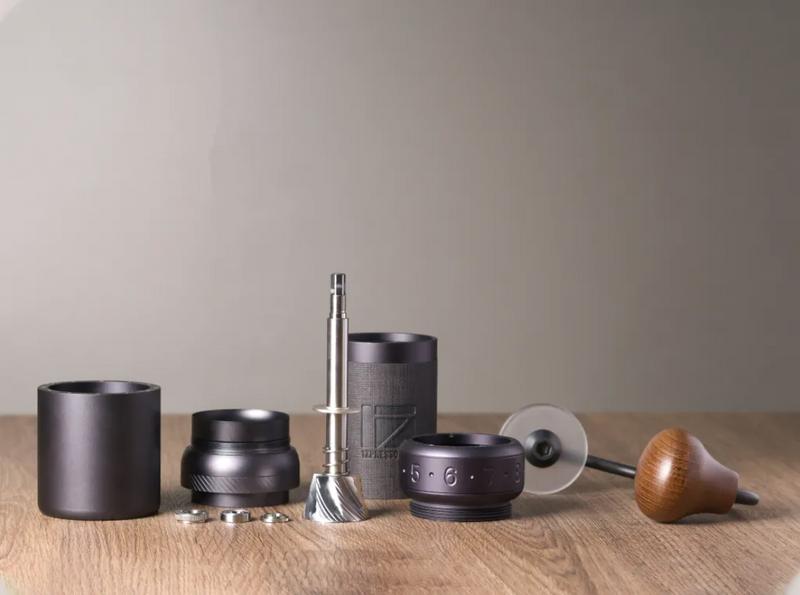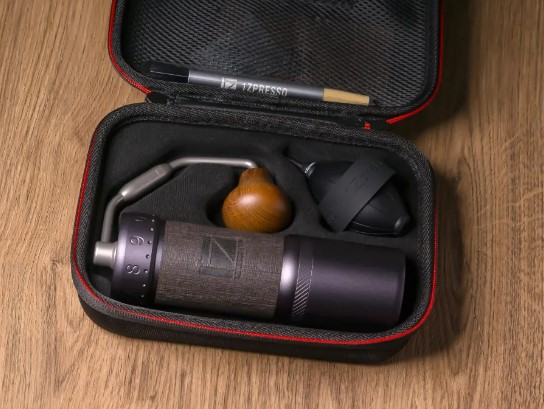Workmanship Meets Efficiency: Presenting 1Zpresso J-Max Coffee Grinder
Workmanship Meets Efficiency: Presenting 1Zpresso J-Max Coffee Grinder
Blog Article
Master the Art of Grinding Coffee Beans: An Overview to Coffee Grinders
For coffee enthusiasts, the procedure of grinding coffee beans is more than just a routine task; it is an art type that can considerably influence the flavor and high quality of the final brew. Coffee grinders play an essential duty in this delicate procedure, yet understanding their usage entails even more than simply pushing a switch. Recognizing the nuances of different mill types, selecting the proper grind dimension, and utilizing the right techniques are crucial steps towards achieving that perfect cup of coffee. The trip in the direction of becoming a coffee grinding master does not finish there. As we check out the ins and outs of this craft, we will discover maintenance keys, repairing suggestions, and a lot more, all targeted at elevating your coffee experience to new heights.
Kinds Of Coffee Grinders
There are 3 key kinds of coffee grinders frequently used by coffee lovers: blade mills, burr grinders, and hand-operated grinders. Blade mills are the most basic kind, using a simple blade to slice the coffee beans. While they are inexpensive and easy to utilize, they frequently cause unequal coffee grounds because of inconsistent grinding. Burr grinders, on the various other hand, provide more precision by crushing the beans in between a relocating grinding wheel and a non-moving surface area. This leads to an uniform work dimension, which is essential for a regular coffee taste. Burr mills come in both level and conelike shapes, each offering slightly different grinding characteristics.
Manual grinders, as the name recommends, need manual effort to grind the coffee beans. They are typically preferred by those who enjoy the process of hand brewing coffee or for those who value mobility. Hands-on grinders can vary in layout, from simple handheld models to more detailed counter top versions. While they might require even more effort, manual grinders offer control over the grinding process, allowing users to change the work size to their preference. Each type of coffee mill has its advantages and excellent usage cases, satisfying the diverse choices of coffee fanatics.

Picking the Right Grind Dimension
With an understanding of the various sorts of coffee grinders, the next crucial action in achieving the ideal cup of coffee is selecting the right grind size. The work size plays a considerable role in figuring out the flavor profile of your coffee (1Zpresso J-Max). Different developing techniques require details work dimensions to enhance the extraction of tastes from the coffee grounds
For a rugged grind, ideal for French press and cold mixture methods, the coffee beans must resemble breadcrumbs, supplying a robust and bold taste. Medium-coarse grinds, ideal for Chemex or Clever Dripper, have a structure comparable to rugged sand, offering a well balanced preference.
Medium grinds, usually utilized in drip coffee makers, have a consistency appearing like regular sand, causing a well-shaped taste. Fine grinds, ideal for coffee equipments, are similar to table salt, generating a rich and intense preference. Finally, extra-fine grinds, made use of in Turkish coffee, are as fine as powdered sugar and create a solid and powerful brew.
Grinding Strategies for Optimum Taste
To visit homepage remove the fullest possibility of taste from your coffee beans, understanding appropriate grinding techniques is necessary. Uniformity is crucial when it comes to grinding coffee beans for ideal taste. By paying attention to these grinding methods, you can raise the taste account of your coffee and take pleasure in a much more rewarding cup every time.
Maintenance and Cleaning Up Tips

Along with routine cleansing, it is essential to inspect your mill for any kind of signs of wear or damages. Check the blades, burrs, and other components for any dullness or breakdowns. Change any worn-out parts without delay to maintain the top quality of your coffee grind. Lastly, store your grinder in a completely dry and tidy atmosphere to stop any kind of dampness or dirt from influencing its performance. By complying with these upkeep and cleansing suggestions, you can guarantee that your coffee grinder continues to deliver tasty fresh ground coffee for several years to come.
Troubleshooting Common Mill Issues


Guaranteeing your coffee mill operates efficiently needs adept troubleshooting of usual issues that may arise throughout its i was reading this usage. One typical problem with coffee grinders is irregular grind dimension.
This can take place when oils from the coffee beans construct up and block the mill's chute. To settle this, dismantle the grinder and clean all components thoroughly, paying unique attention to the chute and burrs.
Finally, if your mill is producing extreme sound throughout procedure, it might indicate a problem with the electric motor or internal elements. In such instances, it is advisable to speak with the manufacturer's directions for repairing steps or seek professional help to diagnose and fix the issue without delay.
Conclusion
In conclusion, understanding the art of grinding coffee beans involves comprehending the various sorts of coffee grinders, choosing the right work size, using correct grinding methods for ideal flavor, and preserving look at this now and cleaning up the mill frequently. By adhering to these standards and fixing typical mill concerns, coffee fanatics can boost their coffee brewing experience and appreciate a delicious cup of coffee every time.
Report this page